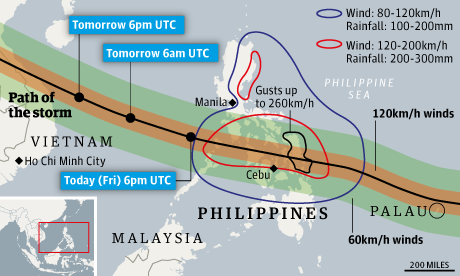We are at a time when offensiveness, violence and hate have become ordinary in almost every corner of the world. There is news of more bloodshed from a different region almost every day, and the violence targets mostly innocent people.
The terrorist attacks which have taken place in Kenya and Pakistan over the last weekend have once again brought Islam and the subject of violence to the world agenda. Even though Islam is a religion of love and peace - and quite clearly states that everyone must be treated as first-class citizens regardless of faith, race, language and thought - how come there is so much violence and pain in the Muslim world?
No religion commands violence. No religion encourages ruthlessness, selfishness, lovelessness and massacre. Violence and the conditions that pave the way for violence develops when ideologies that promote conflict replace the moral values of religion that sees people as equal servants created by Allah and praises modesty, patience, compassion and unrequited love.
Simply because various terrorists call themselves Muslims, who execute people by shooting them when they cannot get an answer after asking them about the "pillars of faith", who resort to their guns when they hear the answer "Yes" to the question of "Are you a Christian?" and who ruthlessly murder innocents, does not make these persecutors Muslim.
A suicide attack in a church in Pakistan has nothing to do with Islam as well. Allah mentions in the Quran that churches are "where Allah's name is mentioned much", (22:40) and thus, churches are under Allah's protection. Anyone who tries to damage churches contradicts the command of Allah.
Conflict goes hand-in-hand with lovelessness. Let's take a look at the Islamic world. Today some of the Shia Muslims do not accept Sunnis as real Muslims and there are Sunnis who do not consider the Shias as Muslims. However, no matter their differences, both the Shias and the Sunnis are Muslims who believe in the same Allah and the same prophets, turn to the same qiblah and read the same Holy Quran. There is no difference in the Quran between Sunni and Shia. So why is there enmity instead of finding the least common denominator? Why is bloodshed and hatred encouraged? The answer is simple: Lovelessness. The problem is not sectarianism. Sectarianism is just another name for legalising hate and violence.
The essence of Islam is love, compassion and friendship. Muslims are obliged to defend and protect the freedom of thought and faith with the command in the Quran, "You have your religion and I have my religion" (109:6) and "...There is no compulsion where the religion is concerned" (2:256). This approach is the best description of democracy and ensures that members of every faith - are protected.
Saying that a religion, which has commands "... if anyone forgoes that [retaliation] as charity, it will act as expiation for him.... " (5:45) even for someone who has committed murder, promotes violence is both ignorance and remorselessness. Every Muslim is obliged to believe that "killing one person is like killing all mankind and giving life to one person is like giving life to all mankind". (5:32) without distinguishing between religions, way of living and thought.
One of the reasons which lead some Muslims who embrace terror and violence as the "right path" - despite these explicit commands of the Qur'an - is that they drift away from the essence of Islam. When the bigoted mentality that embraces false hadiths that conflict with the Qur'an is combined with ignorance, a structure of hate and anger emerges.
The only way to avoid this is to spread the true spirit and morality of the Qur'an, which is love and peace. There are many lessons that the Muslim world needs to take from the Prophet Muhammad, who allowed Christians to perform their own prayer at Masjid al-Nabawi (Prophet's Mosque in Medina), spread his own cloak for Jewish and Christian guests to sit on and who stood up and paid his respects when a Jewish funeral procession passed by him. To learn from these lessons, the Muslim world must know the Quran and our Prophet more closely. They need to explore the beauty of Islam with a reasonable, rational, realistic point of view purified of superstitions. This can only be achieved through education.
The West also has some responsibilities to end the violence; it can be honest and take the first step by recognising the pains caused by the policies they have followed since the beginning of the 20th century. When this is done, the West can also see that it is an irrational method to attempt to shape the Muslim world in line with their own interests. No doubt, every state first thinks about the welfare of its citizens and country; however, they must know that when they do this in a manner that ignores the rights of others and treats them callously, it will generate a backlash as surely as night follows day.
The only way to solve these problems created by the mistakes of the last century is to build a new civilization. Gun-running, supporting dictatorial regimes, overt and covert pressure and oppression cannot build civilizations. That can only be achieved by changing people's minds. For this, we need to start a new education campaign together both in the West and the East. Let's teach this peace-loving, forgiving, moderate, compassionate, understanding, mature spirit that Allah wants from us to all people again. Let's be the teachers of love.
If the prudent, moderate, rational peoples of the West and the Islamic world become allies, we can make big significant changes in little a short period of time. Let's not forget that the good are greater in numbers, but they don't ally, whereas the evil becomes more effective because they do ally and are determined in spite of the fact that they are numerically inferior and less in numbers.



 “.
“.



